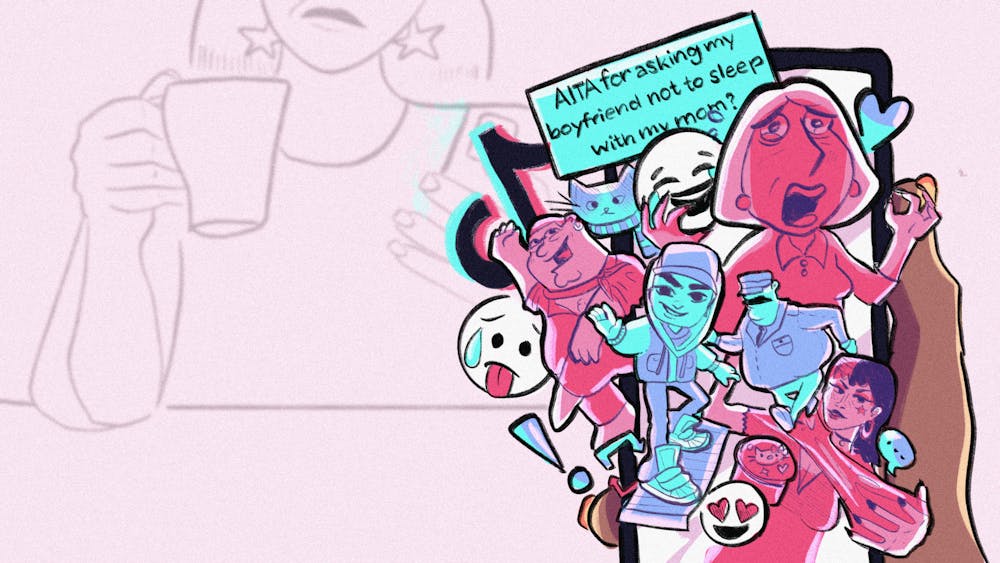There’s a new trend making its rounds on the internet. You’ve probably encountered it while scrolling through your TikTok For You Page. In between posts of fit checks, aesthetic baking videos, and either cats or kids being unintentionally funny, you'll find random Family Guy clips playing beneath videos of disembodied hands playing with colorful slime. These split–screen TikToks seem to be dominating the algorithm. The combination is bizarre, and while it’s captivated users' attention, we're often left wondering how we’ve spent the last ten minutes watching them.
Dubbed both content sludge and sludge content, these videos are borderline nonsensical. They rely on placing two unrelated clips next to each other and playing them simultaneously. While these TikToks aren't uniform, there are general patterns that govern their creation. One clip tends to be more visually stimulating and the other sonically stimulating. Visual clips include anything from people playing with slime, cooking videos, or game play of mobile apps like Subway Surfers. The sound portion typically comes from TV shows (the most popular one being Family Guy),YouTube story time videos, or podcast segments.
The format, as strange as it may seem, has proven to be successful. The hashtags #familyguyslime and #subwaysurferstories, two of the most popular kinds of sludge content, share a combined view count of over 200 million. Sludge content creators have seemingly struck gold. People just can’t seem to look away. But what makes it so addicting?
TikTok is known for its addictive quality. USC sociologist and professor Julie Albright likens the app to gambling because of its random reinforcement. When scrolling through the app, users receive a small amount of dopamine every time they find a post that really catches their attention.
But finding content that triggers a dopamine hit is not a guarantee. It can take a long time of scrolling through TikTok to find something truly rewarding. Albright explains, “It means sometimes you win, sometimes you lose. And that’s how these platforms are designed … they’re exactly like a slot machine.”
Sludge content may exacerbate the already addictive nature of TikTok. The content focuses on overstimulating its viewers with sounds and visuals, making it much more eye catching. By combining two unrelated clips, viewers have more content to grab at their attention. If they get bored with the top video, they can easily switch to watching the bottom one instead. TikTok users get their dopamine fix, and the process repeats.
There is a certain level of self–awareness to the trend. Users have recognized the absurdity of sludge content and its highly addictive effect. Memes and tweets referencing the negative impact of sludge content on attention spans have been circulating around Twitter. One tweet by user @chibleee reads “tiktok ruined my shit I’m watching the menu with a subway surfers video on the side to keep my attention.” Another tweet by user @5bladez shows a picture of someone playing a Nintendo Switch and watching TikToks with the caption “the government won their attention spans are COOKED.” It’s a tongue and cheek way to poke fun at the concept of sludge content while acknowledging the potentially harmful effects.
Sludge content sets a precedent of consistent overstimulation by meaningless content, and it certainly feels dangerous. It can be easy to spiral when social media trends start to negatively impact the real lives of users. Even a funny and self–aware tweet can’t alleviate the overwhelmingly pessimistic attitude social media sometimes inspires.
But it's not all doom and gloom. When that overstimulation of content hits, and it feels as though your brain is starting to short circuit, sometimes the best thing you can do is step back. Take a deep breath, and let that screen fade to black.







